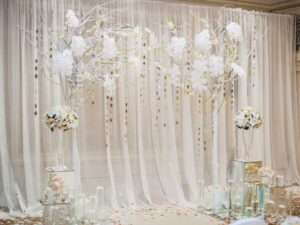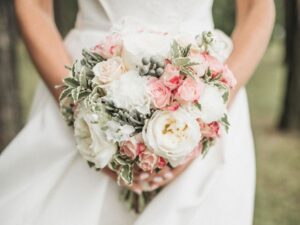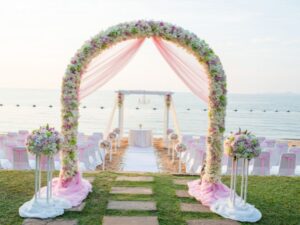So, you’ve been invited to a wedding—exciting! But then you glance at the invitation and see it: “Formal Attire,” “Black-Tie Optional,” or perhaps the ambiguous “Festive Dress.” Suddenly, you’re left scratching your head. Wedding dress codes can be downright confusing. But fear not! In this guide, we’ll walk you through every possible wedding dress code, offering styling tips, outfit ideas, and essential do’s and don’ts so you can confidently show up to the celebration, knowing you’ve nailed the dress code.
Let’s dive in and decode these wedding attire mysteries, shall we?
The Basics of Wedding Dress Codes
Before we dive into specific dress codes, let’s cover some basics. Generally, wedding dress codes are there to help guests understand the level of formality expected at the event. They can vary widely depending on the time, location, and theme of the wedding. Here’s a quick breakdown:
- Black-Tie: The most formal, typically evening wear.
- Formal/Black-Tie Optional: Formal, but with a touch more flexibility.
- Cocktail Attire: Semi-formal, perfect for afternoon or early evening.
- Festive Attire: Dressy but with fun, celebratory elements.
- Beach or Garden Attire: Often relaxed and breathable for outdoor settings.
- Casual or Dressy Casual: Usually applies to more laid-back weddings.
Black-Tie Wedding Dress Code
What It Means: Black-tie is as formal as it gets for most weddings. You’ll want to dress to impress, embracing a sophisticated, timeless look.
For Women:
- Floor-length gowns in rich fabrics like silk or satin.
- Black is absolutely acceptable, but jewel tones like emerald, navy, or burgundy also work.
- Minimalist or classic jewelry, a clutch, and a pair of elegant heels complete the look.
For Men:
- A classic black tuxedo with a bow tie and patent leather shoes.
- Consider a well-tailored black suit if you don’t own a tux, but keep it as formal as possible.
- Accessories like a pocket square or cufflinks can add a refined touch.
Pro Tip: If the invitation specifies “black-tie preferred,” consider sticking to a tuxedo or a gown to match the expected level of formality.
Formal or Black-Tie Optional Dress Code
What It Means: This option is still quite formal, but it allows for a bit more creativity and flexibility.
For Women:
- Opt for either a long gown or a sophisticated cocktail dress.
- High-quality fabrics, subtle sequins, or embellishments work well for this level.
- Accessories can be a bit bolder than black-tie but remain elegant.
For Men:
- A dark suit and tie are acceptable here, though a tuxedo is also fitting if you have one.
- Dark colors like charcoal or navy are preferred to keep things polished.
- Avoid overly casual shoes; instead, go for polished dress shoes.
Cocktail Wedding Dress Code
What It Means: Cocktail attire is a step down from formal but still polished and stylish. It’s the perfect blend of fancy and fun.
For Women:
- Choose a knee-length or midi cocktail dress. Think sleek, stylish, and just a touch glamorous.
- Patterns and colors are more acceptable here, so you don’t have to stick to dark or muted shades.
- A stylish pair of heels or dressy flats will complement the look.
For Men:
- A well-fitted suit in a dark or medium color, paired with a tie, will do the trick.
- Feel free to play a bit with colors or patterns in your tie or pocket square.
- Shoes should still be dressy—opt for leather dress shoes to keep it classy.
Festive Wedding Dress Code
What It Means: Festive attire is semi-formal with a playful, party-ready twist. It’s often requested for holiday or themed weddings.
For Women:
- A fun cocktail dress with sparkle or a pop of color fits the bill.
- Accessories can be bold; think statement earrings or a vibrant clutch.
- Shoes can be a bit more whimsical, such as metallics or patterned heels.
For Men:
- A suit with a bit of flair—think a colored jacket, bold tie, or patterned shirt.
- This is the time to break out festive accessories, like a pocket square in a fun print or dress socks with a holiday theme.
Styling Tip: Festive dress codes allow for more freedom, so feel free to experiment a little, but keep it sophisticated.
Beach or Garden Wedding Dress Code
What It Means: Typically, beach or garden attire calls for lightweight, breathable fabrics, especially for summer weddings.
For Women:
- Opt for a flowy maxi dress or a breezy midi in lighter colors or floral prints.
- Comfortable shoes are key here, like wedge sandals or dressy flats, especially if you’ll be on grass or sand.
- Keep jewelry and makeup light and natural.
For Men:
- A light suit in a color like beige, light gray, or even soft blue.
- A tie is optional, but a collared shirt is generally preferred.
- Loafers or dressy slip-ons are appropriate for these outdoor settings.
Casual or Dressy Casual Wedding Dress Code
What It Means: Casual weddings are typically more relaxed, but dressy casual means you should still look put-together.
For Women:
- A simple dress or stylish jumpsuit will be perfect. Avoid denim or overly casual wear.
- Flats or low heels are fine, but aim for something polished, not beachy or too casual.
- Accessories should be minimal and neat.
For Men:
- A button-down shirt with slacks is ideal. A tie is optional but could add a nice touch.
- Loafers or clean, stylish dress shoes are best—sneakers are a no-go unless specifically indicated.
Wedding Dress Codes FAQs
- What should I do if there’s no dress code on the invitation?
If the invitation doesn’t specify, consider the wedding venue and time. Evening weddings at upscale venues lean formal, while daytime, outdoor weddings are likely semi-formal or casual. - Can I wear white to a wedding?
Generally, no. White is reserved for the bride, and wearing it can be seen as disrespectful or distracting. - Are black dresses appropriate for weddings?
Yes, black is usually fine for most weddings, especially evening events. Just avoid it if the couple has specified bright or festive attire. - What’s the difference between formal and black-tie?
Formal attire is dressy and sophisticated but doesn’t require a tuxedo or evening gown. Black-tie, however, is more specific, often requiring a tuxedo for men and a floor-length gown for women.
Final Summary
Decoding wedding dress codes can be tricky, but knowing the basics makes it so much easier to dress the part. From black-tie elegance to beachy breeziness, each dress code has its own unique flair, ensuring the perfect balance between formality and celebration. So, next time you’re invited to a wedding, reference this guide, dress confidently, and enjoy the festivities—knowing you’ve nailed the look!
Authoritative Links (plain URLs)
- For more on formal wedding attire: www.brides.com
- Cocktail dress ideas: www.theknot.com
- Understanding black-tie dress codes: www.vogue.com



